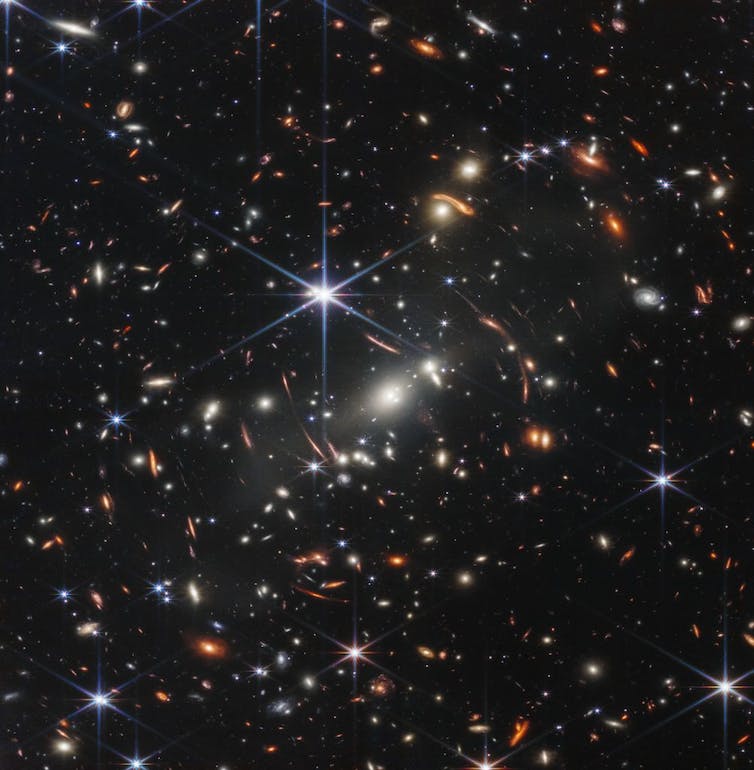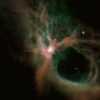
Curious Kids is a series for children of all ages. If you have a question you’d like an expert to answer, send it to [email protected].
Why is space so dark despite all of the stars in the universe? – Nikhil, age 15, New Delhi
People have been asking why space is dark despite being filled with stars for so long that this question has a special name – Olbers’ paradox.
Astronomers estimate that there are about 200 billion trillion stars in the observable universe. And many of those stars are as bright or even brighter than our sun. So, why isn’t space filled with dazzling light?
I am an astronomer who studies stars and planets – including those outside our solar system – and their motion in space. The study of distant stars and planets helps astronomers like me understand why space is so dark.
You might guess it’s because a lot of the stars in the universe are very far away from Earth. Of course, it is true that the farther away a star is, the less bright it looks – a star 10 times farther away looks 100 times dimmer. But it turns out this isn’t the whole answer.
Imagine a bubble
Pretend, for a moment, that the universe is so old that the light from even the farthest stars has had time to reach Earth. In this imaginary scenario, all of the stars in the universe are not moving at all.
Picture a large bubble with Earth at the center. If the bubble were about 10 light years across, it would contain about a dozen stars. Of course, at several light years away, many of those stars would look pretty dim from Earth.
If you keep enlarging the bubble to 1,000 light years across, then to 1 million light years, and then 1 billion light years, the farthest stars in the bubble will look even more faint. But there would also be more and more stars inside the bigger and bigger bubble, all of them contributing light. Even though the farthest stars look dimmer and dimmer, there would be a lot more of them, and the whole night sky should look very bright.
It seems I’m back where I started, but I’m actually a little closer to the answer.
Age matters
In the imaginary bubble illustration, I asked you to imagine that the stars are not moving and that the universe is very old. But the universe is only about 13 billion years old.

Galaxies as they appeared approximately 13.1 billion years ago, taken by the James Webb Space Telescope.
NASA/ESA/CSA/STScI/Handout from Xinhua News Agency via Getty Images
Even though that’s an amazingly long time in human terms, it’s short in astronomical terms. It’s short enough that the light from stars more distant than about 13 billion light years hasn’t actually reached Earth yet. And so the actual bubble around Earth that contains all the stars we can see only extends out to about 13 billion light years from Earth.
There just are not enough stars in the bubble to fill every line of…



